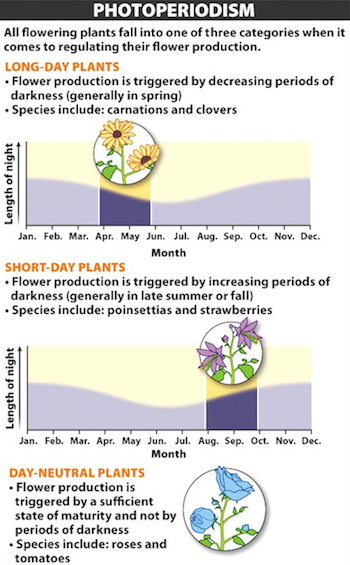
Chapter 19. 19·8–19·10 External cues trigger internal responses.
Show What You Know

Instructions
Check your understanding of concepts from 19·8–19·10 External cues trigger internal responses by answering the following questions.
1.
1. A positive tropism is movement toward a stimulus, and a negative tropism is movement away from a stimulus. When considering the growth of shoots or stems, which of the following is classified as a negative tropism?
| A. |
| B. |
| C. |
| D. |
| E. |
2.
2. Animals are able to move away from changing or unsuitable environments, whereas plants are unable to do so. Plants use growth patterns to grow toward or away from various environmental stimuli. Which pattern of growth occurs in response to touch or physical contact?
| A. |
| B. |
| C. |
| D. |
| E. |
3.
3. Plants have internal biological clocks, which allow them to initiate various biochemical and physiological actions at the right time. Which of the following are the most important environmental cues that set and reset a plant’s biological clock?
| A. |
| B. |
| C. |
| D. |
| E. |
4.
4. In day-neutral plants:
| A. |
| B. |
| C. |
| D. |
| E. |
5.

5. In the southern hemisphere, the amount of daylight is greatest in late December and is least during late June. What are the implications of this for short day plants?
| A. |
| B. |
| C. |
| D. |
| E. |
Activity results are being submitted...